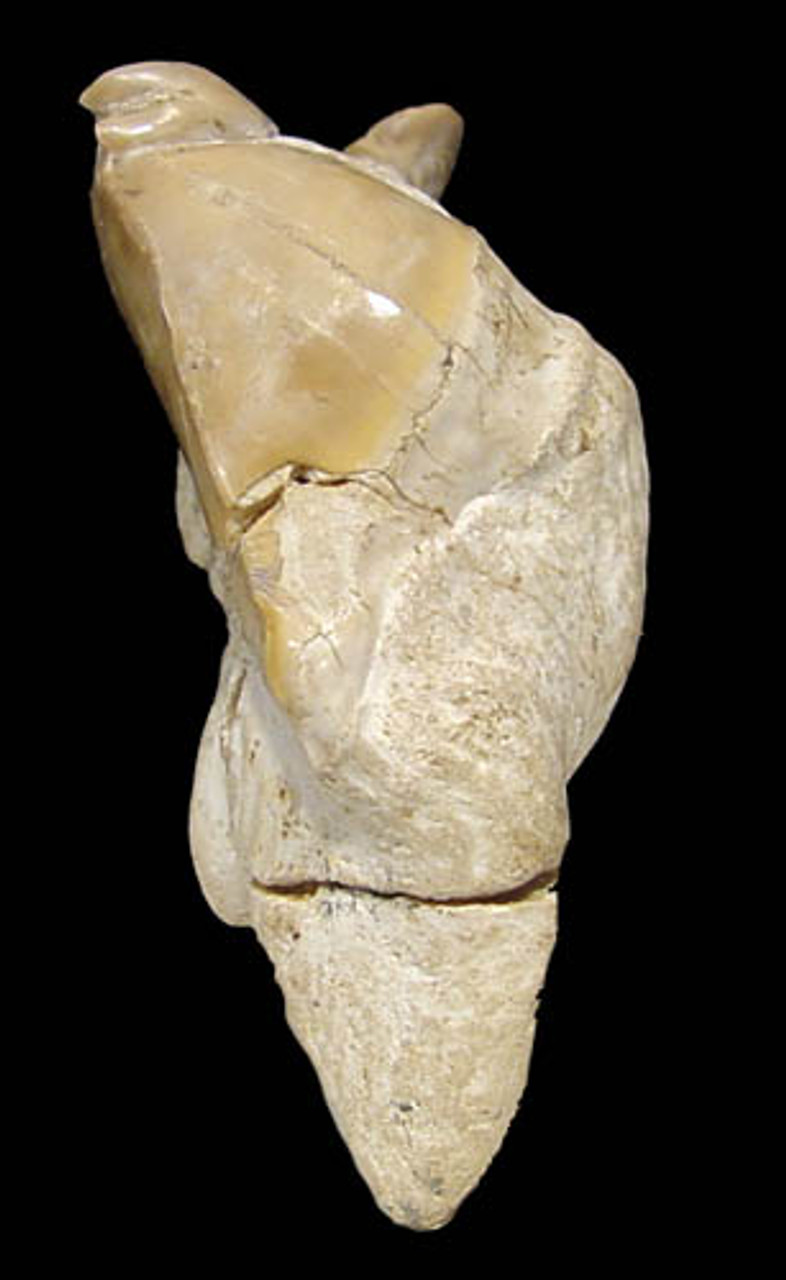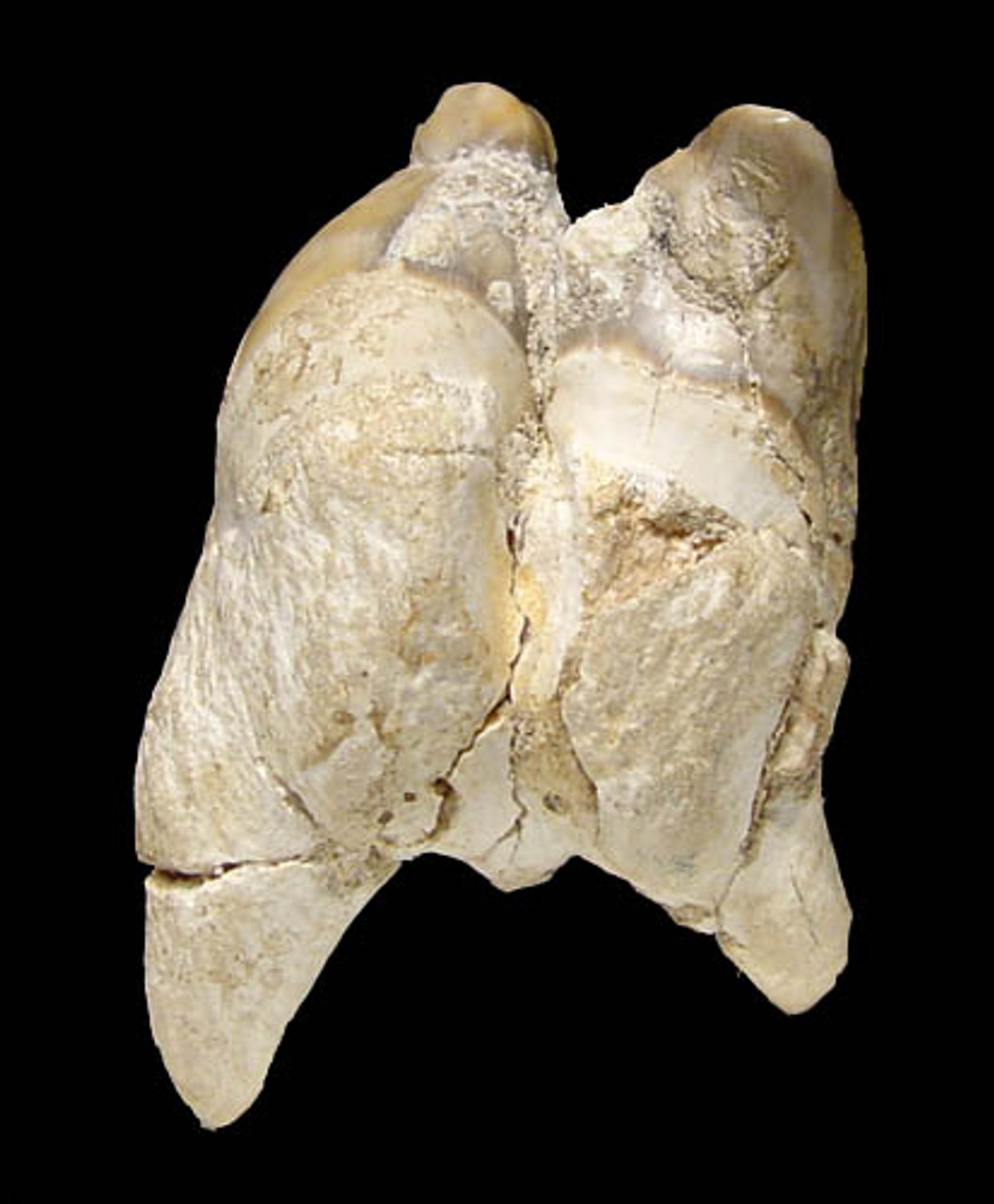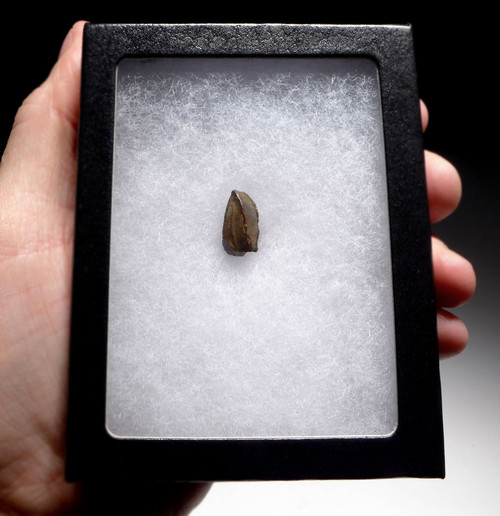Product Description
ITEM #
|
SH1-009
|
||
ID
|
Otodus obliquus
|
||
FOUND
|
Phosphate Deposits - Khouribga, Morocco
|
||
AGE
|
PALEOCENE: 60 million years ago
|
||
SIZE
|
2.25" long on the diagonal
|
||
CONDITION
|
REPAIR ONLY - NO FABRICATION
|
||
NOTE
|
ONLY "TWIN" TOOTH WE HAVE EVER SEEN
|
||
INCLUDES DISPLAY BOX - Actual Item - One Only
Comes with a certificate of authenticity / information sheet |
|||
This pathologically deformed Otodus obliquus tooth is the most extreme specimen we have ever come across. It actually is a Siamese twin-type example with the deformation of not a single tooth but the presence of TWO teeth that are joined in the middle with a common root lobe in the center. What's more bizarre is when viewed from the top down, you can clearly see a delineation between the two teeth and two separate crowns twisted in opposite directions. While pathological deformities are well-known from this site and species, examples of deformed twin-joined teeth like this are extremely rare and prize specimens for advanced collectors. This tooth was broken during the initial collecting efforts but all parts were put back together and there is NO RESTORATION and NO FABRICATION. The profile and anatomy of this specimen is as it was when whole. No cracks have been filled to maintain the integrity of the natural state of the tooth. VERY RARE and HIGHLY RECOMMENDED!
Pathologically deformed fossils have a devout collector following all their own. They are an interesting branch of fossil collecting and can provide insight and information into the developmental problems with prehistoric creatures.
This fossilized shark tooth once graced the ferocious jaws of a large shark now extinct, called the Mackeral Shark, otherwise known as Otodus obliquus. This creature is thought to be at the heart of the White shark family tree and is found in hard sandstone rock matrix in the phosphate mines in Khouribga, Morocco. The Mackeral Shark was king of the Paleocene seas 60 million years ago and is the prehistoric ancestor of the modern Great White Shark. The features of these teeth are common to all Otodus species, a massive root and large separate cusplets flanking the much larger, and heavy center crown. The characteristics indicate a highly developed and efficient hunter-killer.
 US DOLLAR
US DOLLAR
 EURO
EURO
 AUSTRALIAN DOLLAR
AUSTRALIAN DOLLAR
 CANADIAN DOLLAR
CANADIAN DOLLAR
 POUND STERLING
POUND STERLING


















